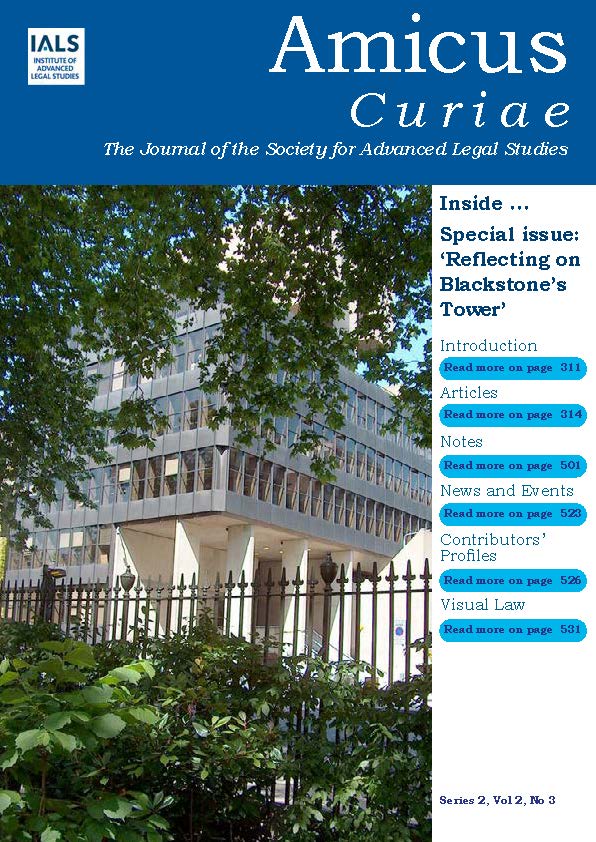Gender, Sexuality and the Law School
(Re)thinking Blackstone’s Tower with Queer and Feminist Theory
DOI:
https://doi.org/10.14296/ac.v2i3.5310Abstract
This article will focus on exploring gender and sexuality within the law school. Largely silent from Twining’s ‘grand tour’, these two areas are now key parts of the law school landscape, having become firmly established as key elements of law school discourse and legal scholarship in the years since Blackstone’s Tower was published. The Blackstone’s Tower of Twining’s imagination was, Twining suggested, ‘holding up a mirror to a familiar world’, and it was a world that made only passing reference to gender and no reference to sexuality. Feminism is mentioned twice in 244 pages, whilst queer—still emergent within legal scholarship in 1994—is not referenced at all. A once radical and vital text can perhaps appear antiquated to today’s readers. Yet, this should not be regarded as a criticism of the text but rather a reflection of how the law school and legal scholarship has transformed since 1994. Whether in the number of gender and/or sexuality and law courses that now permeate through the UK law school, or the extraordinary growth first of feminist scholarship and more recently queer scholarship, the law school has been profoundly impacted by socio-legal shifts in gender and sexuality research. This is scholarship that does not merely serve as ‘another’ theory or an addendum to jurisprudence, for these theories have offered the ability to reshape the very architecture of the law school and to re-imagine Blackstone’s Tower for what it is and what it can be. This article seeks to explore that journey and offer a glimpse of future possibilities.
Keywords: legal education; gender; sexuality; queer; feminism; gay; pedagogy; LGBTQ; teaching.
Downloads
Downloads
Published
Issue
Section
License
Those who contribute items to Amicus Curiae retain author copyright in their work but are asked to grant two licences. One is a licence to the Institute of Advanced Legal Studies, School of Advanced Study, University of London, enabling us to reproduce the item in digital form, so that it can be made available for access online in the open journal system, repository, and website. The terms of the licence which you are asked to grant to the University for this purpose are as follows:
'I grant to the University of London the irrevocable, non-exclusive royalty-free right to reproduce, distribute, display, and perform this work in any format including electronic formats throughout the world for educational, research, and scientific non-profit uses during the full term of copyright including renewals and extensions'.
The other licence is for the benefit of those who wish to make use of items published online in Amicus Curiae and stored in the e-repository. For this purpose we use a Creative Commons licence (http://www.creativecommons.org.uk/); which allows others to download your works and share them with others as long as they mention you and link back to your entry in Amicus Curiae and/or SAS-SPACE; but they can't change them in any way or use them commercially.



